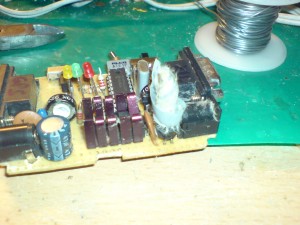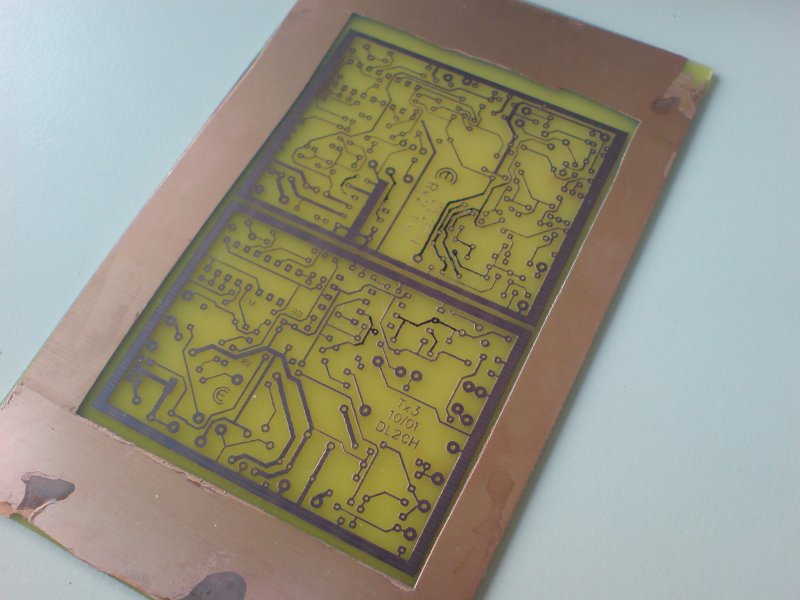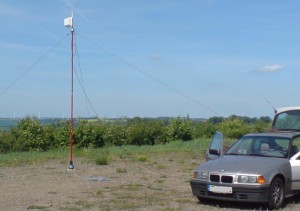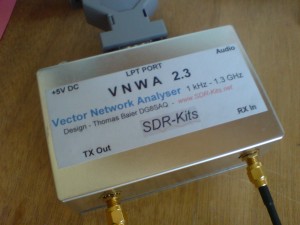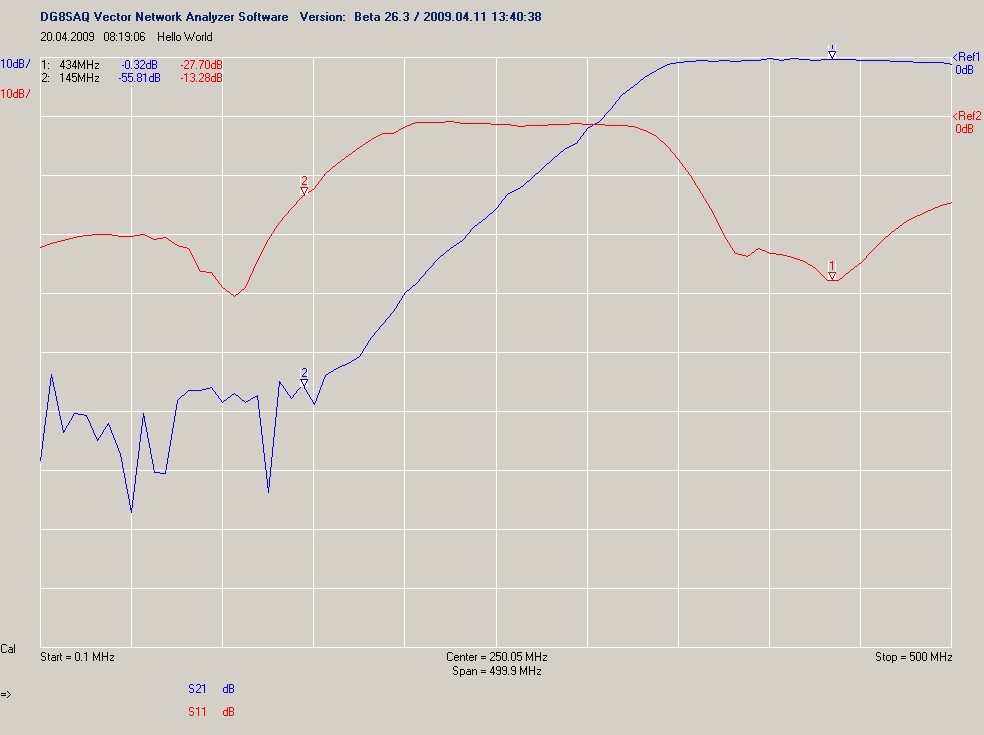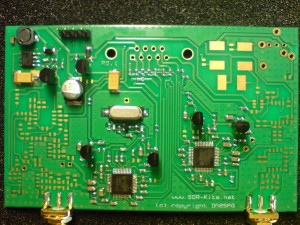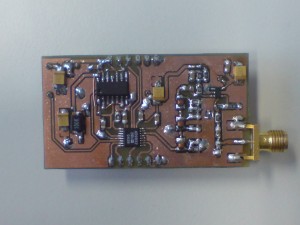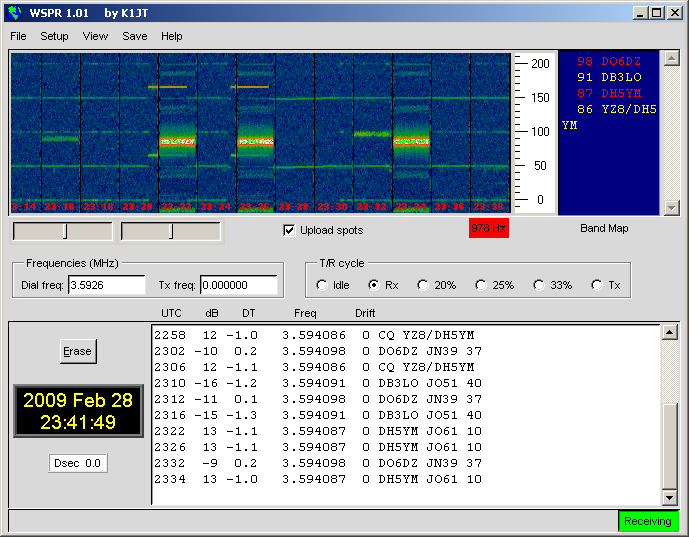After long time thinking about it i started to build up my laser station i edged the PCB´s today. The parts are on the way from the distributor. The diodes are already available here (2x 10mW, red). I also buyed some lenses in the past week. The biggest problem seems to be the mechanical fixture for fine adjustment of the direction of the 3 different optical axes.
Author Archives: mario
DUR Activity on 2009-05-17
I tried to participate in the activity day of the “Dresdner UKW Runde” (DUR) last sunday.
So i drove to the Bayerhoehe (JO61RB) which is some km west of Dresden close to Wilsdruff.
Testing the equipment one day before gave me a good feeling but unfortunately the RX/TX relay of the transverter did not switch reliably with the 12V battery supply.
So i was just able to do two qso. Also the antenna was a bit tiny. So i have to look for a small Yagi before the next test. What worked fine was the antenna rotor driven by a 12V to 220V switched converter.
73s de Mario
Too much computer …
Compiling WSPR for Linux (Ubuntu 8.10)
Here the steps that lead to successfully starting WSPR 1.1 on my Ubuntu 8.10 system:
From OH2GQC i got the information how to checkout the sources (You need SVN installed before):
mkdir src
cd src
svn checkout svn://svn.berlios.de/wsjt
cd wsjt/branches/wspr
now you need a couple of packages necessary to compile/run WSPR. The list can be found at WSPRNET.org
python2.5-dev
python-numpy 1.1.1 (no problems with this version here yet)
python-imaging tk
python-pmw
libportaudio2
libportaudio-dev
portaudio19-dev
libsamplerate0-dev
subversion
subversion tools (I may have thrown this in for good luck)
python-svn
In addition the gfortran compiler seems not valid for WSPR. Download the g95 debian package and install it. This compiler will work.
When i tested the revision of the trunk of the WSJT tree was something 11xx. There i got several error messages after typing make. Therefore i reverted the directory of WSPR back to r1045 which was said to be ok. I did this in the WSPR directory with the command:
svn up -r 1045
After that a ./configure should work and after that make should do all the compile stuff.
After that start WSPR with the command:
python wspr.py
VNWA completed
Today i finished the work on my DG8SAQ VNWA and did some experiments measuring filters and antennas i already had reference results for. The results are really good for such a simple hardware.
The next picture shows a screenshot of the UHF part of my homemade diplex filter.
Building up DG8SAQ VNWA
Beginning this week i received my DG8SAQ Vector Network Analyzer kit. I used some of the rare time this week to start the assembly of the kit. Until now i finished the assembly and testing of the power supply section and the both DDS sections. Mounting the DDS IC’s was a little bit difficult even with a stereo microscope and hot air station. The PCB i got was gold plated without tin. For the first DDS i tried to solder the pins first and then i tried to get the solder tin through the open vias at the bottomof the PCB to the top side. My fear was that there might be no connection beween ground and the exposed pad of the DDS. So i removed the chip again. I saw that my fear was not confirmed. The exposed pad was clearly soldered before. Cleaning the pads and soldering the chip a second time was really tougth job …
Two sections of the circuits still to do. Lets see !
MiniDDS signal generator
I uploaded sources and documentation for my tiny DDS signal generator. The page can be found here
It is using a AD9832 DDS generator IC from Analog Devices and can produce signals up to 10MHz (up to 20MHz if a AD9835 is used).
V-/U-/SHF Contest from JO60OM
Last weekend i participated the first V-/U-/SHF contest this year. I was part of the DM7A
team which operated from the oremountains in JO60OM (Hirtstein). We faced problems with
icy antennas which made operation with yagies almost impossible. The 2m band was running with
a omnidirectional antenna over the whole night. On 70cm we lost one of the PA systems. In addition
one antenna system was out of order because of a defect preamplifier. Also 23cm appeared to have low output power. Let´s be excited for the May contest…
Whispers at shortwave…
Usually shortwave is not my favourite area of amateur radio. But inspired by an article from Eike-DM3ML i did some experiments
with WSPR (weak signal propagation reporting). It is a automatic beaconing network invented by K1JD. It is really exciting to see
low power stations appear at the display even with a really small receiver antenna. In addition i wrote some software for my
Atmel microcontroller that controlls a small DDS signal generator circuit. With this simple setup it is possible to transmit WSPR beacons
at 5dBm output power. Unfortunately 5dBm are not enougth to be heard by anyone with my small indoor antenna. Maybe i should
build an amplifier ;)
Kondensatoren sprengen für Anfänger…
Man nehme: einen Elko und ein Netzteil mit genügend Leistung. Den Elko falsch gepolt an das Netzteil anschliessen. Nach nur wenigen Sekunden sollte es ganz laut knallen. Manchmal passiert das aber auch ohne Absicht, wie im Bild zu sehen ;) Die austretenden Dämpfe sind allerdings nicht gerade gesundheitsfördernd.
